Clarify and Adjust Mission during Covid-19
In times of crisis it is becomes even more critical to have a clear and compelling mission statement or strategic intent which provides a direction...
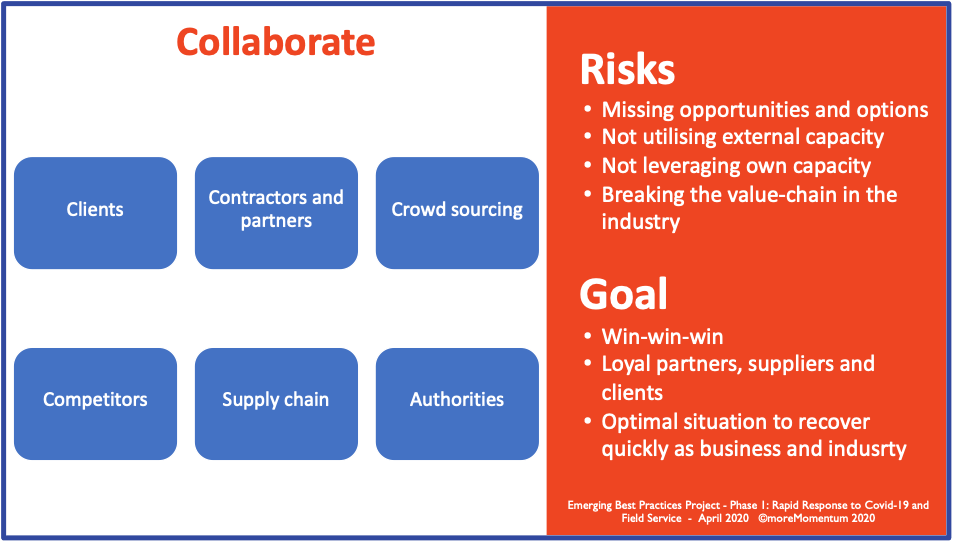
In times of crises, we are all in the same boat to survive and thrive. You may need to collaborate with parties you normally would not collaborate with as well as exchange critical information all over the world. The interesting thing is, that in today’s very connected world, there is a huge potential to quickly find contractors and partners to collaborate with.
COVID-19 as well as measures from national governments and individual companies will impact your business and the business of your clients, vendors, partners and service providers. What kind of impact and the extent thereof depends on your industry and varies per country and in time.
Whatever the situation is for your business, it will require some serious adjustments to meet the changing demand, to secure the continuity of support to your clients and to secure the continuity of your operations.
This is one of the 3 main sections from the "Ultimate Guide for Phase 1 - Rapid Response to Mitigate the Immediate Impact of Covid"
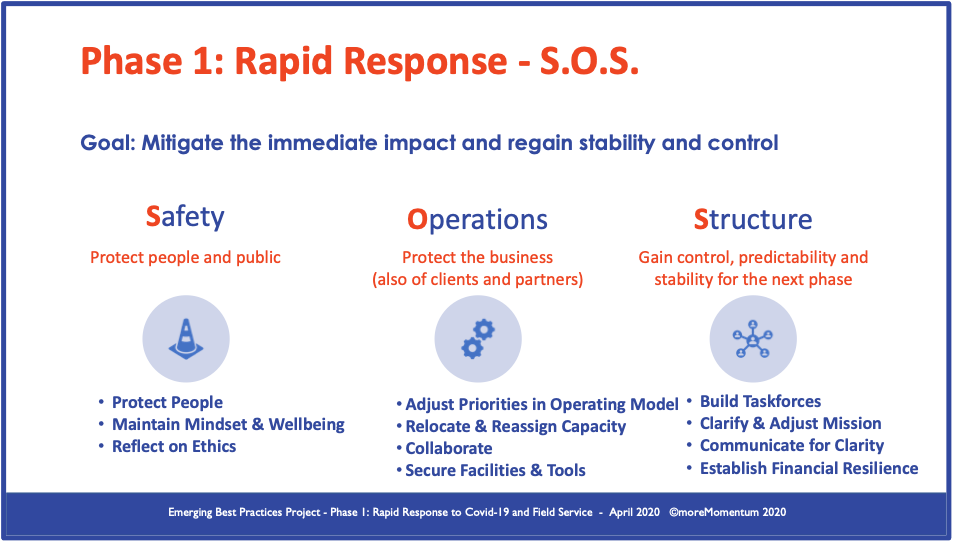
Regarding Collaborations:
Risks to address
Goal
Main aspects
Clients
By following a collaborative and supportive approach with clients, exploring the changing requirements, limitations, possibilities and mutual interests, several effects can be achieved;
Contractors and partners
By adjusting roles and activities between our business, contractors and partners, there will be more possibilities to keep the operation going. Let go of short-term commercial interests and focus on the problems that need to be solved during the crisis.
A lot is possible if we;
Crowd sourcing
Extending the topic above about “Contractors and Partners”; All over the world there are many independent and capable contractors. In today’s connected world we can easily reach them all, get insights to assess their capabilities and get them productive with the right support and information.
Your existing network of experts, clients and partners can help.
By the way, this fits in one of the trends we were seeing in field service anyway, the emerging GIG-economy or crowdsourcing.
Competitors
In a crisis of this magnitude and duration, it is probably more important to keep the industry going than to win from competitors and push them out of the market. Competitors can be great to collaborate with to keep each other’s operations going and each other’s clients supported.
A worst-case scenario would be to see the industry not being able to recover rapidly from the crisis leaving all, including your business, with little revenue for too long.
Supply chain
Continuity of your operations and support to your clients heavily depends on the availability of spare parts. 2nd sourcing and boosting inventory are tactics mentioned above.
We also need to have a high level of transparency in the supply chain, in both directions, to be able to manage and mitigate the need for spare parts adequately;
You need transparency of potential decline and improvements in availability and logistics.
Your suppliers and logistic service providers need transparency to anticipate on the changing demand
Authorities
In a crisis which is strongly moderated and led by healthcare and governmental authorities, it can be important to collaborate with these authorities;
Download the full Guide for Phase 1 - Rapid Response
Subscribe for the our Impulse Letter
With regular updates about service news, trends and best practices.
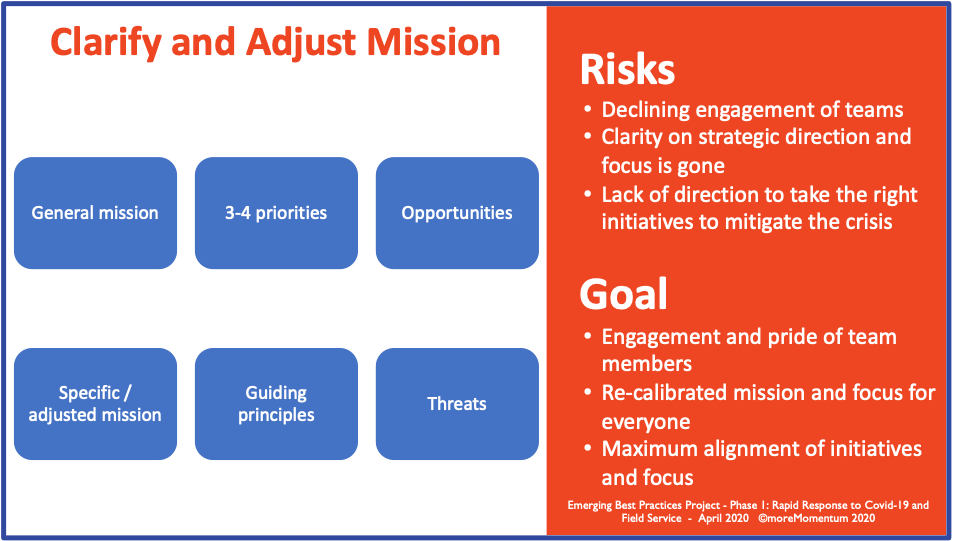
In times of crisis it is becomes even more critical to have a clear and compelling mission statement or strategic intent which provides a direction...
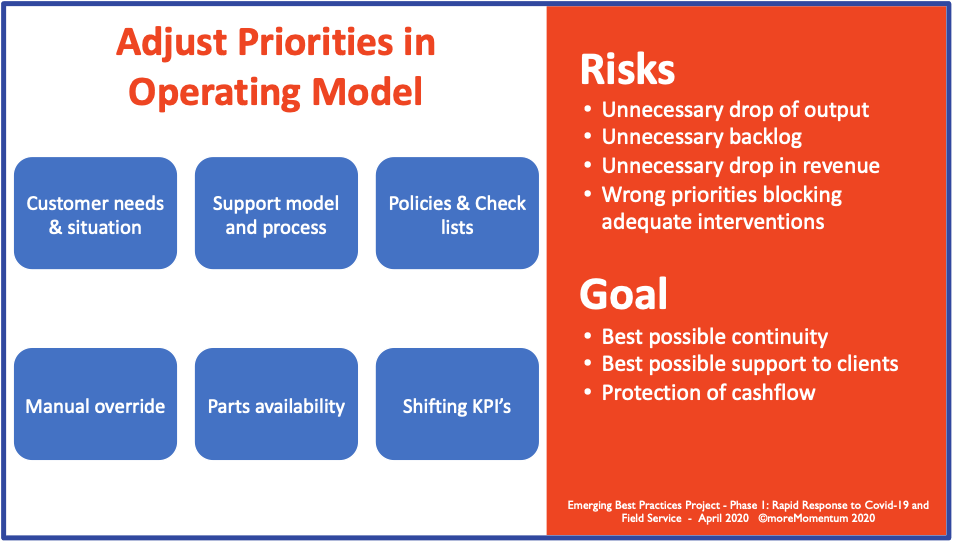
During a crisis many aspects of the normal way of working will not be adequate to continue business, or may simply not be possible to continue. Phase...
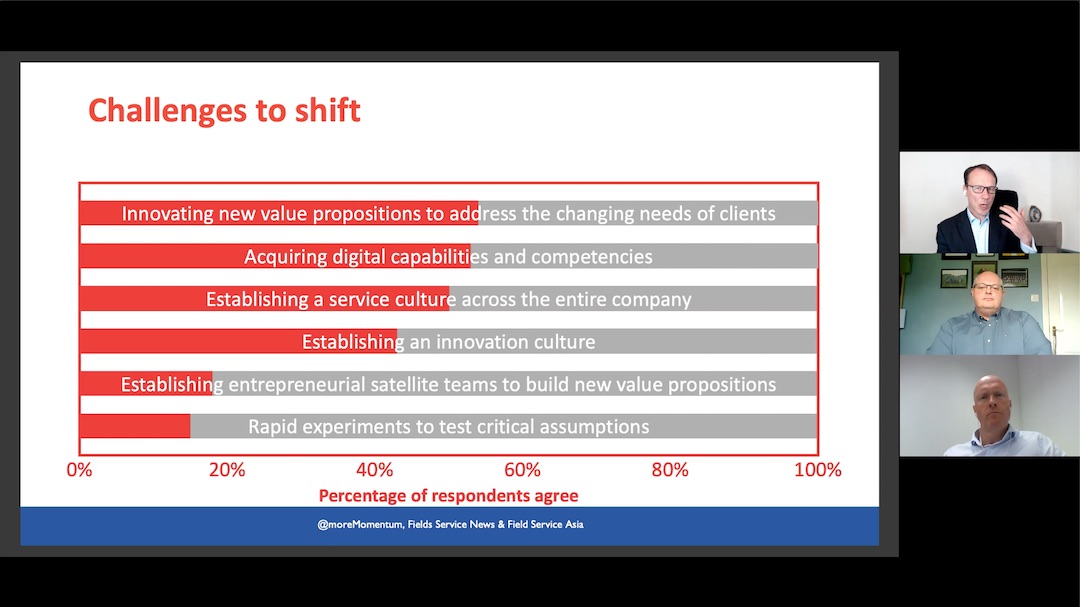
During the Field Service Asia Virtual Event of WBR, we discussed the findings of our research Innovate your way out of the Covid-Crisis. Which is...